 |
275 Dual Equalizer/Reverb Module |
|
The 275r is a modern recreation of the original 275 using VCAs instead of vactrols. Operation is similar.

The yellow switch sends the input signal to the rear monitor out connectors. The black switches change the operation of the CV/control. In Near it operates as a typical dry/wet mix. In Recede CCW is no signal and as you rotate the control it fades in the dry and then a dry/wet mix and then to full wet at full CW. At center it appears to be about a 50% dry/wet mix.
I believe the original 275 was designed to be in a quad/surround setup. The voltage controlled mix outputs would be used in the front and the reverberation outputs would be used in the rear. I believe this is how it worked:
Near: The control simply adjusts the wet/dry mix for the front and the rear reverb is off for the first 1/3 of the control, peaks at 2/3 of the control, and then fades to off at maximum CW.
Recedes: The dry to the front is off for the first 1/4 and then increases to maximum at CW. The front reverb is off and peaks at 1/3 of the control and then fades to off at 2/3 of the control. The rear reverb operates the same as off for the first 1/3 of the control, peaks at 2/3 of the control, and then fades to off at maximum CW.
The two reverb tanks are Accutronics/Belton 1BC2A1B. Decoding the number results in a 9.25" long x 3.375" wide x 1.313" high tank with a 150 ohm input impedance, 10,000 ohm output impedance, and a medium decay (1.75 to 3.0 sec). The input and output connectors are grounded with no spring lock and the tank is mounted vertically with the connectors facing up.
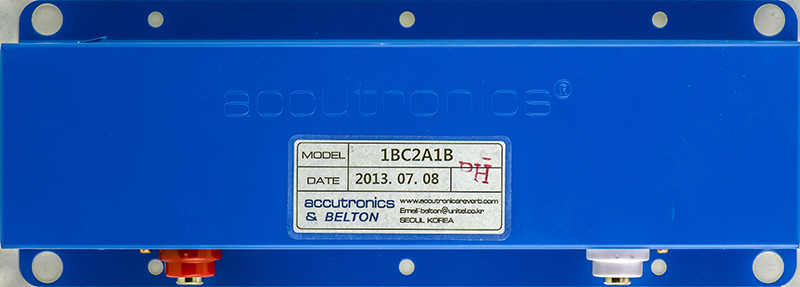
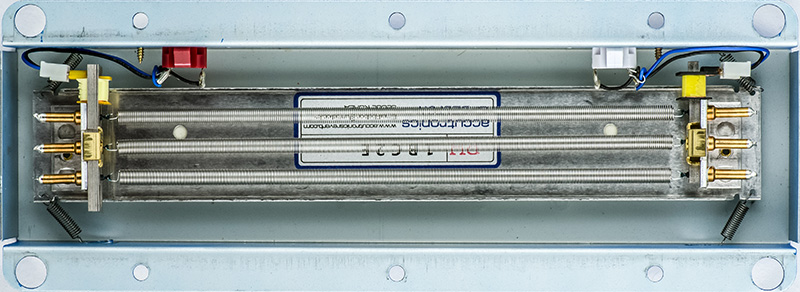
You can also use the 1BC2E reverb tank for the 208 which has the same specifications in the smaller size.
Construction/Modifications
PCB1 construction is straightforward.

The reverb dry had significant high frequency oscillations. With all the decoupling capacitors on this board, there are none on the +12V on the LM380s. I added 0.1 µf capacitors between pins 14 and 11 which tamed the oscillations.
The reverb recovery amplifier has high gain. I added some square pins to change be able to select the gain to unity. This allows an external effects unit to be used with this module. The reverb drive is from the LM380, and is a low impedance output with near unity gain, so sufficient to drive an external effects unit, albeit at high amplitude. Selecting the reverb recovery amplifier to unity gain allows the wet signal from the external effects unit to operate with the module. You can see these square pins and the lifted paralleled resistors just below the horizontal white line.
The reverb return seemed a bit low to me so I paralleled R89 and R112 with another 10K. By paralleling, it allows the customer to easily remove this modification if they thought the reverb return was a bit too much. This does not affect the gain with the modification for unity operation.
There is no DC path to ground for the reverb return so I added two 100K resistors to a 6 pin MTA100 connector to terminate these inputs. This would normally be removed but inserted when using an external effects unit.

Operation
The Equalized Output is out of phase with the input and unity gain.
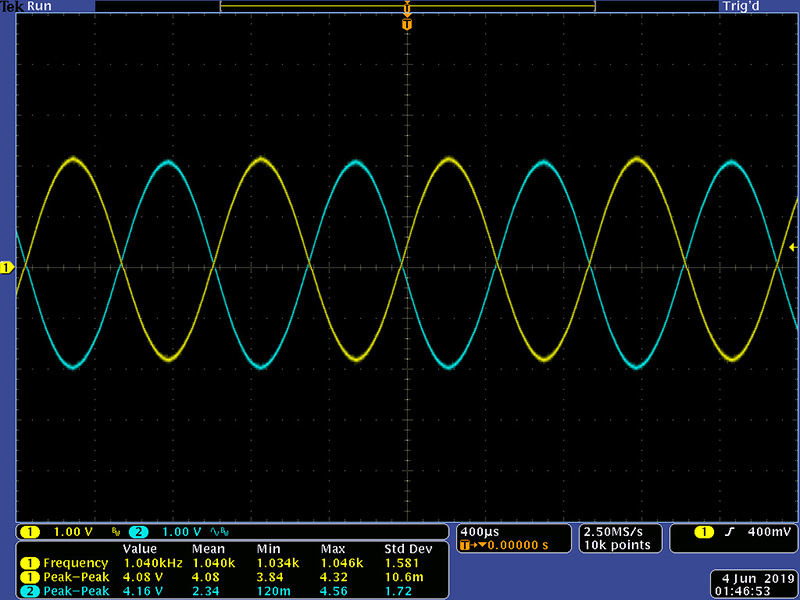
The Monitor Output is out of phase with the input and unity gain.
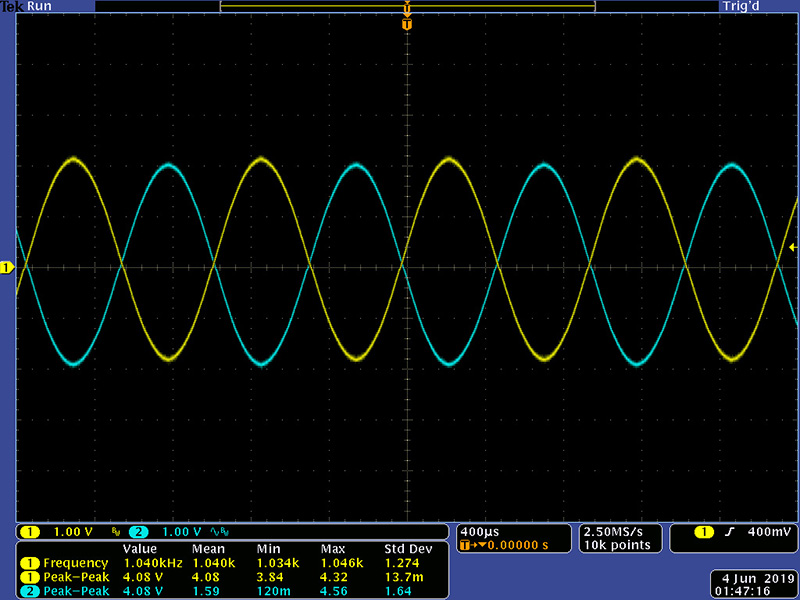
The CV Output when set to Near dry is in phase with the input and unity gain.
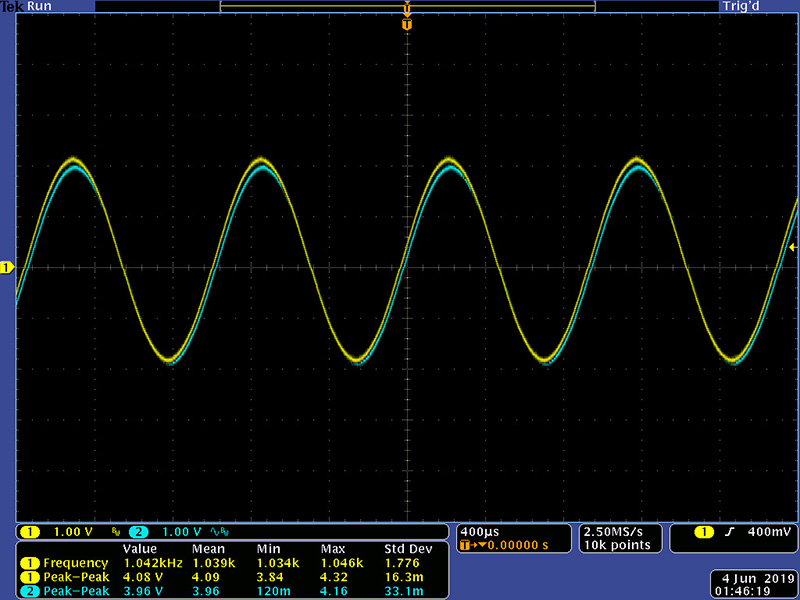
The CV Output when set to Near wet and the Reverberated Only Output are the same amplitude which vary with frequency. Phase of course changes with frequency due to the wave propagation time through the spring. There are a number of peak resonances. At 100 Hz the amplitude of the wet is just slightly less than unity.
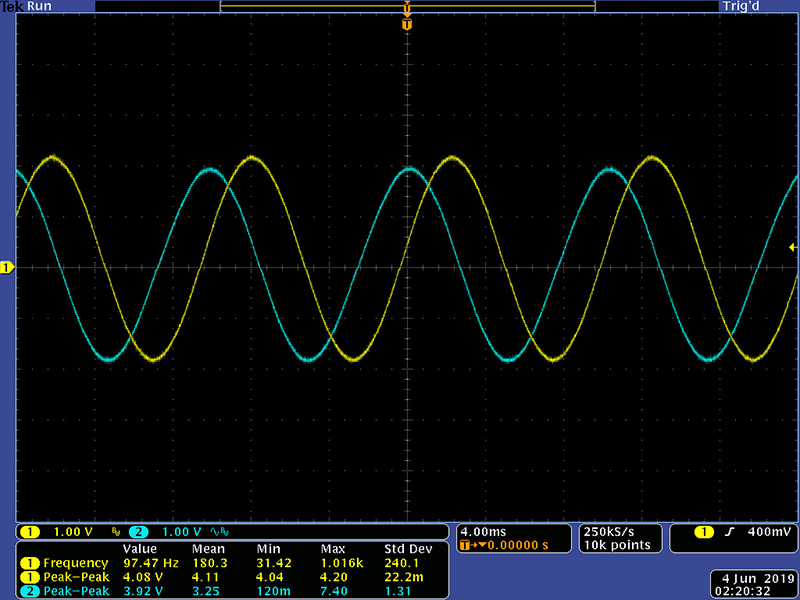
At 200 Hz the amplitude of the wet is just slightly greater than unity.
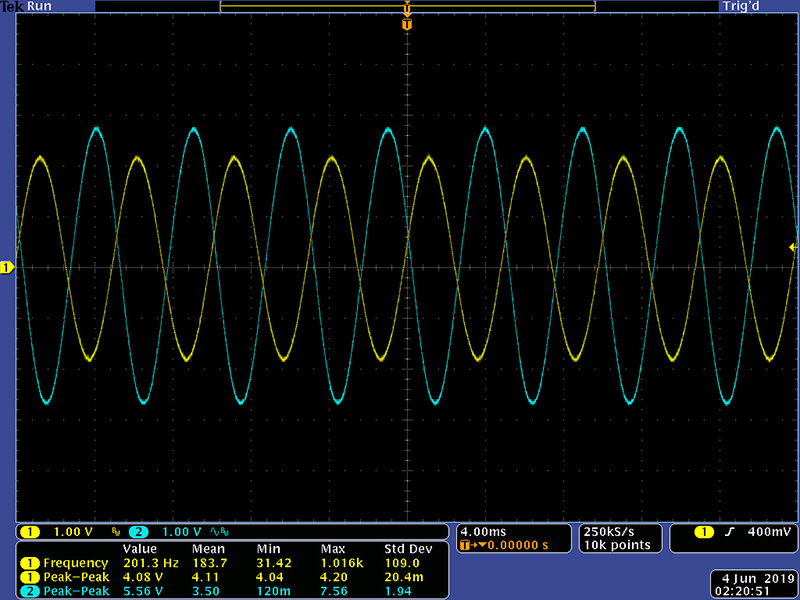
By 500 Hz the amplitude of the wet has begun to decrease but still sounds reasonable.
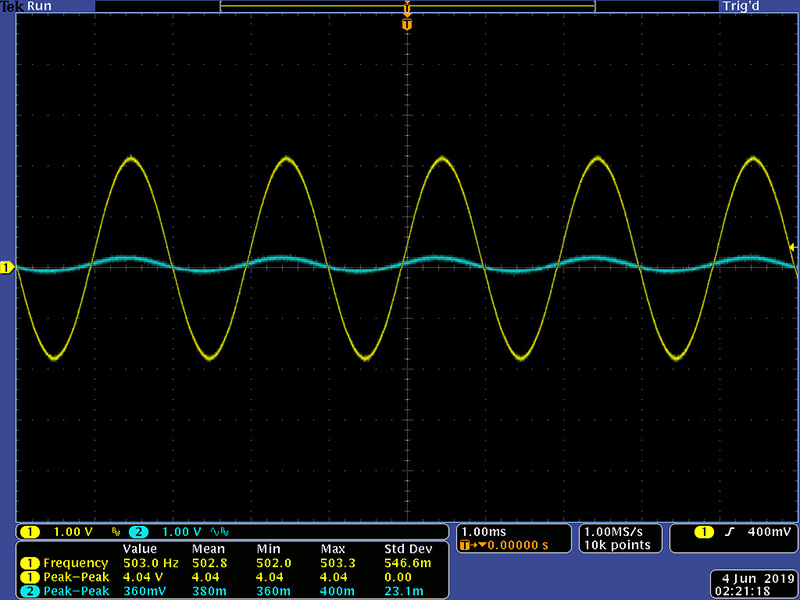
At 1 KHz the amplitude of the wet increases somewhat.
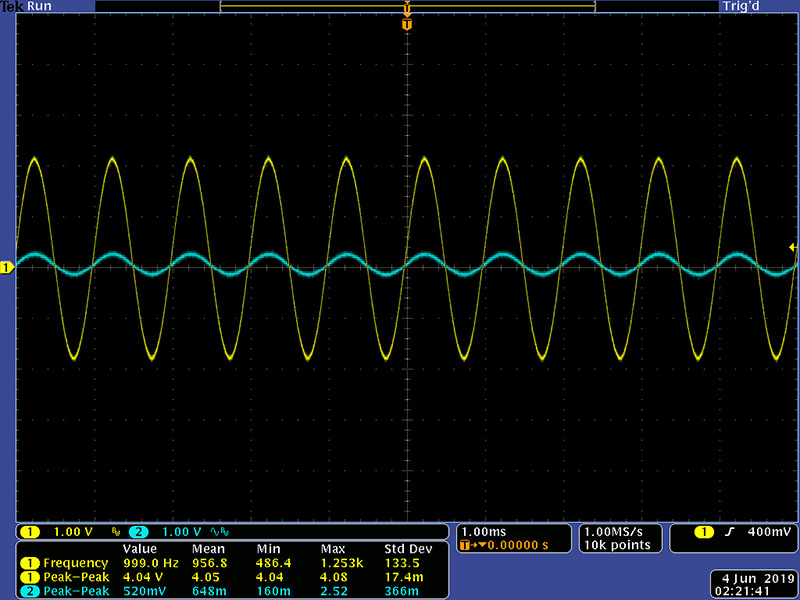
At 2 KHz and above the amplitude of the wet is minimal.
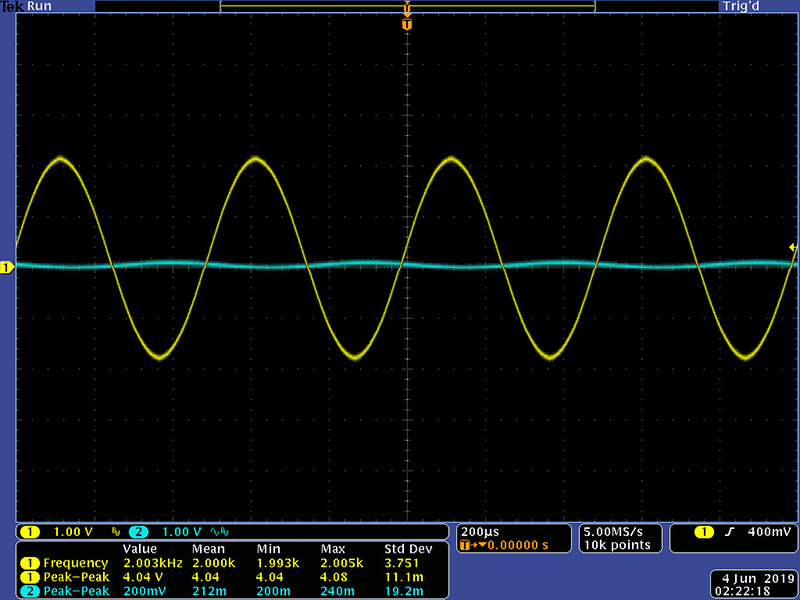
This scope image shows the input, reverb drive, output, and monitor outputs with a square wave input and the control on CCW, so a full dry signal.

This scope image shows the input, reverb drive, output, and monitor outputs with a square wave input and the control on mid, so a mix of dry and wet signal.

This scope image shows the input, reverb drive, output, and monitor outputs with a square wave input and the control on CW, so a full wet signal.

This scope image shows the input, reverb drive, output, and monitor outputs with a sine wave input and the control on CW, so a full wet signal. The lack of harmonics in the sine wave shows the reverb with a more sine wave shape.

I setup a swept 0 to 10V ramp CV and disconnected the reverb tank. This scope image shows the dry signal on Near.
.jpg)
Since I modified the reverb return for a unity gain option, I could use an external signal generator and monitor the output with no signal input. This scope image shows increasing wet signal in Near. These two modes are the same as for my MEMS 275.

This scope image shows a much lower amplitude dry with maximum gain at the mid position for Recede. It is much lower and flatter than the MEMS 275.
.jpg)
This scope image shows a delayed increase in the wet amplitude in Recede. The MEMS 275 rolls off the amplitude near full CW. The 275r Recede does not operate quite the same as the original. However, I'm not sure when I would ever use Recede mode.
